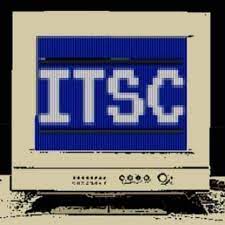BioInteractions has announced the launch of Surface-Active Systems (SAS), a pioneering new category of high-performance, zero-leaching coating solutions designed to improve implant performance, enhance patient safety, and evolve therapeutic outcomes.
Comprising both Surface-Active Therapeutics (SAT) and Surface-Active Materials (SAM), Surface-Active Systems address the rising demands in infection prevention, thrombosis control and device longevity across a growing range of minimally invasive and long-term implantable devices.
“For many clinicians and patients, the benefits of Surface-Active Systems coatings remain largely unknown,” explains Nicholas Inston, President-Elect of the Vascular Access Society and Consultant Surgeon in Vascular Access & Transplantation at Queen Elizabeth Hospital Birmingham. “By preventing infection and reducing clot formation at the device surface, these coatings address two of the most serious risks associated with dialysis catheter use: bloodstream infections and thrombosis—including thrombin sheath formation, a common cause of catheter dysfunction and reduced dialysis efficiency.
“Providing long-lasting, site-specific antimicrobial and thromboresistant protection— with the potential to reduce reliance on systemic drugs—has the potential to transform how vascular access is managed in dialysis,” adds Inston. “In addition, by reducing the need for systemic antibiotics, minimising interventions, preventing fibrin sheath development, and lowering hospital readmissions, these coatings could help reshape clinical strategies, ease the burden on healthcare systems, and give patients greater safety and control over their care.”
“Surface-Active Systems represent a paradigm shift for medical device coating technologies,” said Arjun Luthra, Commercial Director at BioInteractions. “Within this category, durable surface treatments are tailored to enhance patient outcomes through improved device longevity as well as increased device efficacy, with better safety of medical devices. Patients benefit from improved implant performance, superior interventional results and an enhanced quality of life. Overall, they are suitable for a wide variety of medical devices and are compatible with a broad range of device geometries and substrates ranging from small metal implants to larger polymer-based systems.”
Within the Surface-Active Systems category are two product families: Surface-Active Therapeutics and Surface-Active Materials.
Surface-Active Therapeutics, which includes AstutePlus Antithrombogenic and TridAntz Antimicrobial, are advanced surface treatment technologies that do not need to release active ingredients to be effective. Instead, they remain permanently functional on the device surface providing sustained therapeutic performance without systemic drug exposure. Applied directly to the surface of medical devices, these treatments address clinical challenges such as infection, thrombosis and fibrin sheath formation.
Surface-Active Materials, which includes Assist Lubricious, are robust, durable surface treatments that enhance device performance, particularly in demanding environments where friction and movement, such as in tortuous environments, are critical factors to the device insertion, removal and performance in the patient. These surface treatments improve the physical function of the surface, enhance the biocompatibility as well as strengthens the mechanical durability of the devices, ensuring consistent operation over time and in high-stress conditions.
“For over three decades, BioInteractions has been at the forefront of biocompatible innovations, delivering advanced solutions like TridAnt, an enhanced antimicrobial coating that is the only non-leaching antimicrobial coating in the world; as well as AstutePlus, an Advanced Antithrombogenic Coating; and Assist, a Flexible Hydrophilic Coating, that address clinical challenges with unmatched precision, performance and durability,” concludes Luthra. “With Surface-Active Systems, BioInteractions is setting a new benchmark in medical device coatings, offering OEMs permanent performance on their devices whilst reducing the risks of systemic drug-based therapies. It’s the next leap forward in better, safer and smarter implants.”
Speaking to Med-Tech Insights about the launch of Surface Active Systems, Luthra said: “The main objective for this new category is to provide the best of all worlds, and that will open up a new gateway of a new generation of medical devices. So Surface Active Systems takes the best of all the other types of materials, whether they’re passive, whether they’re bio inert, whether they’re drug-eluting, and minimises all the risks. So, they are completely non-leaching and permanently effective. They don’t need to release any compound, so they’re safer for the patient.
“They work for decades at a time. They have very, very high efficacy in a broad range of different clinical problems. So preventing clots, preventing fibrin sheath, preventing infections, and ultimately what this means is devices can be innovated in a way they haven’t been before. And that’s what we want to open up, is a new category of medical device systems that serve the patient better, serve the physician better, and ultimately impact the health care systems better than ever before.”
Related
The post BioInteractions launches new category of medical device coatings first appeared on TechToday.
This post originally appeared on TechToday.
